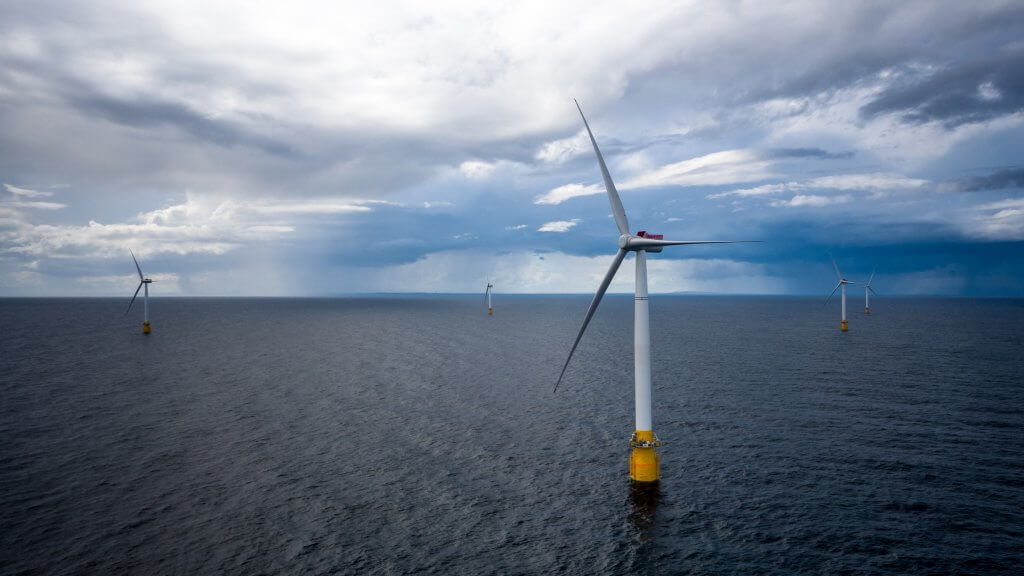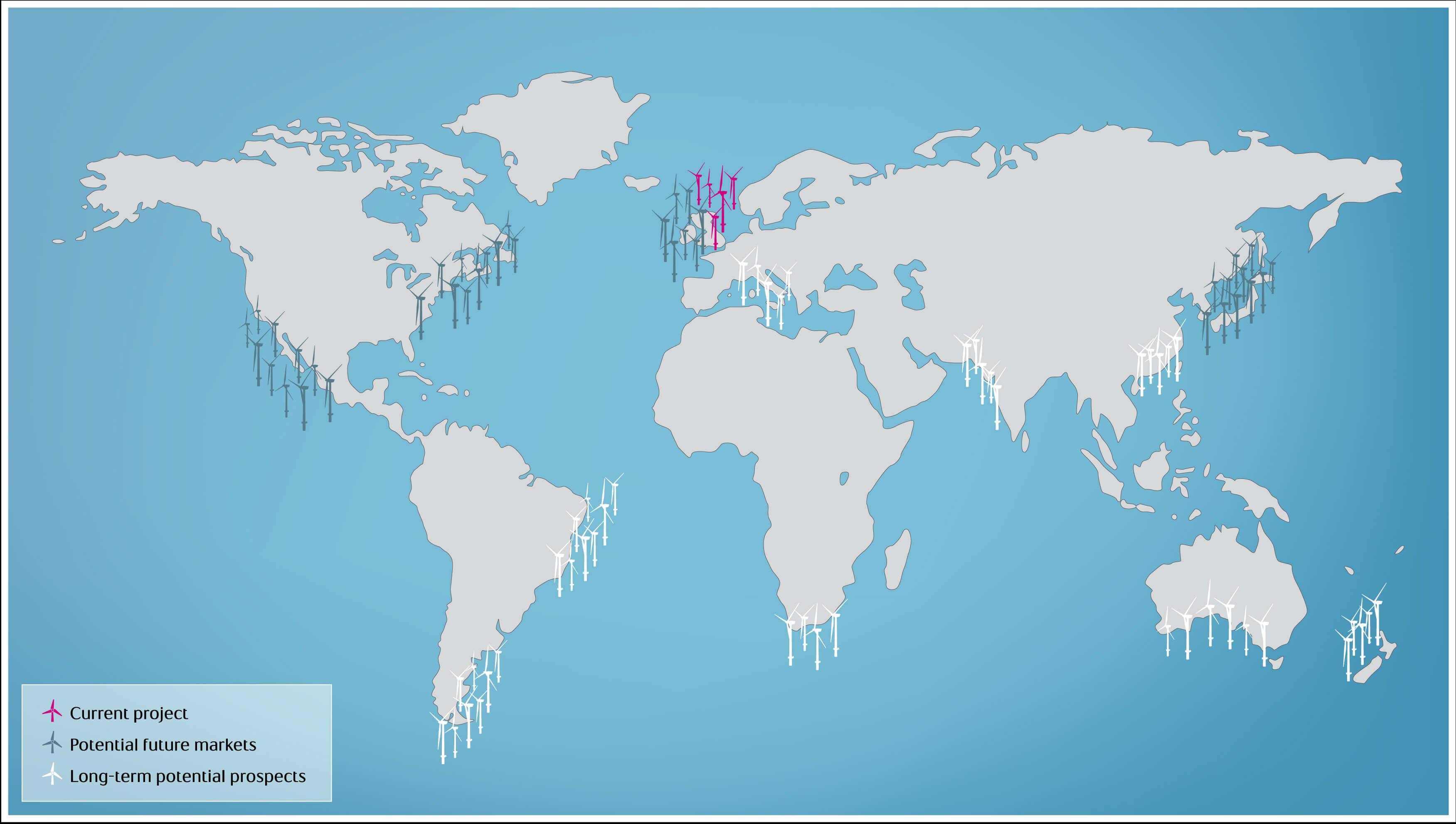Written by Greg Lupion
Contributor
Three months after deployment, the world’s first floating wind farm surpassed performance expectations, according to its operator, Statoil. The five-turbine, 30-MW Hywind Scotland Pilot Park — situated 15 miles off the Aberdeenshire Coast — operated at 65% of its maximum theoretical capacity last November, December, and January, the Norwegian energy company said.

Each of the five floating wind turbines at Hywind Scotland Pilot Park is capable of pumping 6 MW of energy into the grid for a project total of 30 MW of generating capacity. When not used, power is stored in lithium batteries for later use. Watch the full story of Hywind’s development at tinyurl.com/FloatingHywind (Source: Equinor | Statoil)
By comparison, the typical capacity factor during the winter season for a bottom-fixed offshore wind farm is 45 to 60%. The 65% capacity figure was achieved despite a hurricane and a severe winter storm with wave heights up to 27 feet.
Hywind’s turbines are about 830 feet tall, 256 ft of which is submerged beneath the water’s surface. Each massive tower is tethered to the bottom of the sea by floating chains, weighing in at 1,323 tons. The floating turbines, in waters more than 328 feet deep, theoretically could generate enough electricity to power 20,000 average UK homes when operating at full capacity.
The offshore advantage
The main advantage of a floating wind farm is that offshore wind speeds are typically faster than on land. Small increases in speed result in large increases in energy production. For example, a turbine in a 15-mph wind can generate double the energy as one in a 12-mph wind, according to the American Geosciences Institute. In addition, offshore wind speeds are steadier than those on land, producing a more stable source of power. Considering that coastal areas constitute half of the U.S. population, these benefits offer the opportunity to serve power-dense regions.
The disadvantages of building offshore include potential turbine damage from severe offshore storms, the high costs of construction, and the challenge of building reliable wind farms in deep waters.
To date, floating turbines have been deployed only in modest projects, such as the 7-MW system built and operated by the Fukushima Wind Offshore Consortium off the coast of Fukushima Prefecture, Japan. Typically, offshore wind farms are built on sea beds in shallow waters. However, 80% of the offshore wind resources are in water that is too deep (200 ft.) for conventional bottom-fixed wind turbines, according to a Statoil spokesperson.
“We expect to see exponential growth in floating offshore wind worldwide,” Statoil said, particularly as technology matures and costs drop. “We are on the outlook for new regions, and are evaluating several interesting areas where there is a potential for floating offshore wind. Of high-potential markets, we believe in Japan, the west coast of North America, and even Europe as a few examples.” These are areas where sea beds drop steeply off the coast.
Europe a trailblazer?
The European market outlook for renewable energy in general is bullish. Between 2015 and 2030, the EU could double its use of renewables, from 17 to 34%, as a share of total energy usage, according to a recent report by the European Commission’s International Renewable Energy Agency. The report notes that Europe’s energy sector can accommodate large shares of wind power generation.

This map shows the vast potential of offshore wind worldwide. (Source: Equinor)
Spurred by the Paris agreement on climate change, Europe has been setting goals for the deployment of renewable energy. Renewable energy consumption rose from a 9% share in 2005 to 16.7% in 2015, according to the commission’s report. The EU is on track to meet its 20% target established for 2020.
However, to broaden the adoption of wind power, builders, and operators must find ways to slash its costs. Increasingly, they are investing in internet of things or IoT. “Generally, IoT offers operators the opportunity to efficiently manage their assets,” said Forrester Research senior analyst, Paul Miller. “Detailed monitoring and predictive maintenance improve uptime for remote farms. Engineers can be tasked to visit sites in need of support, and their chances of carrying the right parts with them also increase.”
Filed Under: Floating turbines, News, Offshore wind, Turbines





Hello Michelle. As I can see, this report was published a year ago. We also want to let a wind turbine float. However, because of physics and its enormous powers, we have deviated from a HAWT. Our current model of a VAWT successfully passed the first tests in the wave pool in August. Further attempts will follow in March. We have come up with a unique new concept for speed control of the turbine. I wish the HAWT operators all the best and may the cost-benefit factor also work from an ecological perspective.
Best regards Michael